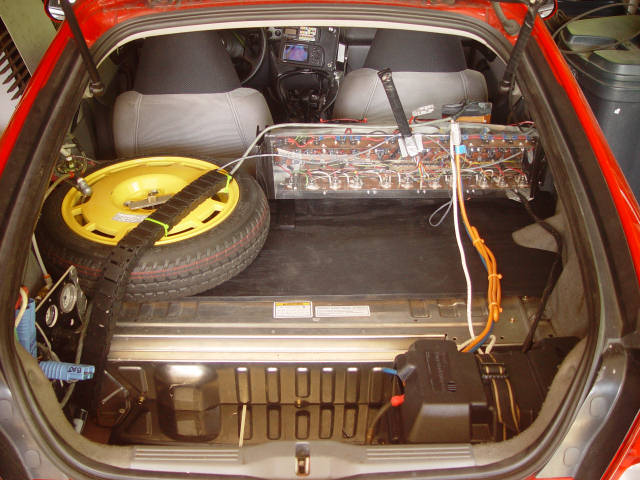Need more juice for more MPG
|
 | |
|
Booster supply and additional Batteries
|
It is easily possible to push the MPG to over 100 mpg using MIMA, but you soon find that the higher use of the electric drive leaves the small 144V (4 useable AH) capacity battery always wanting more charge. While replacing the small pack with a larger higher capacity pack would seem the best solution, it is a costly one, as the SOC (State Of Charge) determining system would not be able to properly determine the SOC on the larger pack. The battery management system must also determine if the pack is operating in the safe voltage and temperature range, so any replacement pack would need to duplicate those functions and tie into the cars stock control system. A big reverse engineering task.
I chose a simpler system that retains the stock battery , but applies a boost charge to it through a path that lets all safeties and SOC systems perform normally.
I wanted this boost system to be reasonably priced,(limited budget) so after exploring the NIMH and LION, and LI PO chemistries, and being humbled by their price, I went back to lead acid. It is the lowest cost, but heaviest and lowest capacity solution. 300 Lbs of lead. I installed 4 trojan AGM size 31 batteries in the spare tire well. To get the 48V to the 177V needed to charge the main pack, I built a high power (2900W) dc/dc converter system from off the shelf Vicor DC/DC converters. The boost system is set up as a constant current supply, so that at any voltage of the stock pack, the boost will apply a constant 16.5 A.
While this is only 1/16th the possible max draw of 100A from the stock battery, it is enough so that with conservative use of assist, one can maintain sufficient charge to get over 100 MPG as long as there is charge in the boost battery.
All at normal traffic flow speeds. With the present batteries, I can get about 45 minutes of boost from a full charge.
results:Madison WI 20 miles 121.7 MPG.
Ipswich MA 23 miles 122.6 MPG.
>30-40 mile EV only operation, average speed 27 MPH
MPG infinite.
|
|